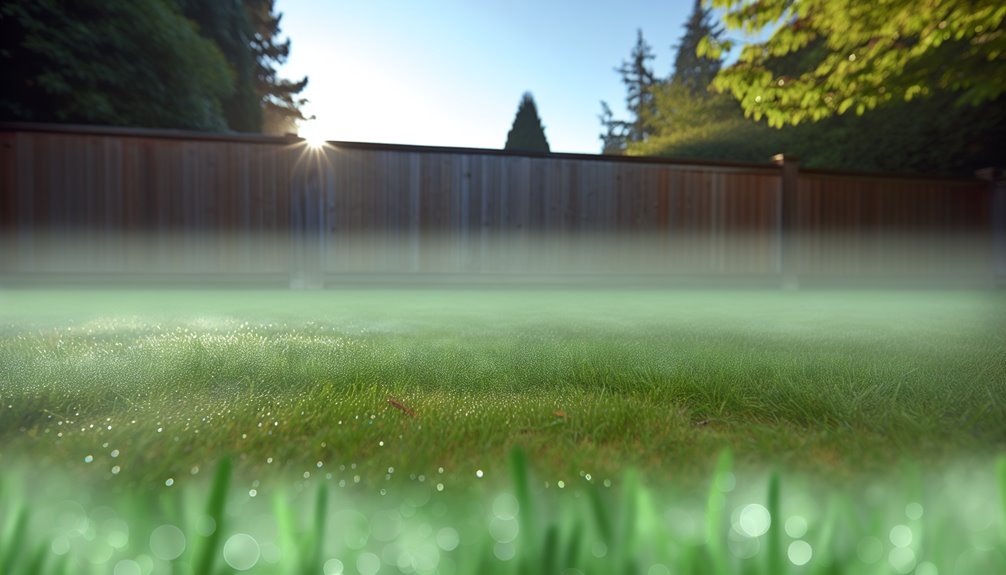Mosquitoes can transmit West Nile virus in as little as a single bite per 150 infections—small odds, high stakes. You can reduce that risk by using barrier sprays that bind to vegetation and structures, intercepting ticks and mosquitoes at their resting sites. These residual formulations, applied per label and local regulations, create a compliant, measurable buffer around your yard. You’ll see how they differ from fogging, how long they last, and what safeguards protect kids, pets, and pollinators.
What Barrier Sprays Are and Why They Work

Although the term sounds generic, barrier sprays are targeted pesticide applications that create a residual chemical “wall” on vegetation, structures, and ground-level harborage to intercept ticks, mosquitoes, and other pests before they reach people or pets. You apply labeled actives to likely resting sites, where contact kills or repels. The benefits of barrier sprays include reduced vector pressure between services, measurable nuisance relief, and support for community well-being. You’ll choose common ingredients such as pyrethroids, natural pyrethrins, or biopesticides, pairing them with synergists or microencapsulation as allowed. Follow EPA labels, local ordinances, reentry intervals, and pollinator-protection guidance to deliver safe, consistent results.
The Science Behind the “Invisible Shield
You’ve seen how barrier sprays work in practice; now focus on the mechanisms that make that “invisible shield” hold. You rely on active ingredients binding to foliage through molecular interactions—hydrophobic tails anchor to waxy cuticles while charged groups resist displacement. Microencapsulation controls release, sustaining bioavailability within label-stated intervals. Knockdown and residual effects arise from neurotoxic modes of action validated by EPA registrations and efficacy studies. You account for environmental factors: UV degradation, rainfall, temperature, and organic load. Calibrated nozzles guarantee droplet size for ideal coverage without drift. You document mix rates, reentry intervals, and buffer zones, protecting people, pollinators, and waterways.
Barrier Sprays vs. Fogging and DIY Repellents

When you choose a yard protection method, distinguish barrier sprays from thermal/ULV fogging and DIY repellents by persistence, mode of action, and regulatory rigor. You’re serving families and guests, so anchor decisions in a barrier effectiveness comparison and transparent compliance. Barrier sprays bind to vegetation, offering residual knockdown; fogging disperses droplets that dissipate quickly; DIY raises variability and DIY safety concerns.
- Residual control: barriers persist on surfaces; fogging is transient.
- Targeting: barriers intercept resting sites; fogging targets free-flying adults.
- Data and labels: EPA-registered residues vs. consumer-grade variability.
- Risk management: calibrated equipment, drift controls, PPE, and reentry intervals reduce exposure.
Application Basics: Where, When, and How Often
Coverage drives results: focus applications on mosquito resting zones—shaded vegetation, undersides of leaves, dense shrubs, groundcover, fence lines, and clutter—while avoiding blooms to protect pollinators per label. Use calibrated low-pressure sprayers and even fan patterns; verify coverage with water-sensitive paper. Apply when wind is 2–10 mph, temperatures are moderate, and foliage is dry. Dawn or dusk targets resting adults and reduces drift. Follow label-restricted entry intervals and PPE. Base frequency on surveillance data and complaint trends; in most regions, schedule biweekly to monthly, adjusting with rainfall and growth flushes. Align seasonal timing with emergence curves. Document application techniques, sites, and weather.
How Long Protection Lasts and What Affects It

Executed correctly, those application basics set the stage for residual control, but protection isn’t indefinite. You’ll typically see a protection duration of 21–30 days, verified by label data and field trials. Expect variability driven by environmental factors and substrate chemistry. Monitor results, document intervals, and recalibrate as needed to serve residents reliably.
- Rainfall intensity: heavy rain accelerates wash-off, shortening intervals.
- UV exposure: high irradiance degrades actives faster, especially on sun‑baked edges.
- Surface type: porous mulch and rough bark bind residues; nonporous siding extends life.
- Pressure from pests: peak emergence demands tighter schedules despite nominal duration.
Safety Considerations for Kids, Pets, and Pollinators
Although barrier sprays can substantially reduce vector and nuisance pests, you must manage them under the product label to protect children, pets, and pollinators. For kid safety, restrict access during application and until treated surfaces dry; verify reentry intervals and ventilation. For pet wellness, remove bowls, toys, and bedding; confine animals until residues set. Prioritize pollinator protection by avoiding bloom, targeting non-flowering vegetation, and observing drift controls. Screen for chemical sensitivity among household members and adjust formulations accordingly. Calibrate equipment, use correct droplet size, and document lot numbers. Store concentrates locked and upright. Dispose of rinsates per local regulations.
Choosing a Professional Service and What to Expect
Before you hire a barrier-spray provider, assess whether the company operates under proper licensing, insurance, and pesticide applicator certification for your state, and verify that technicians hold current credentials. Request product labels, safety data sheets, and integrated pest management procedures. Confirm service credentials and review client testimonials that address reliability, re-entry intervals, and pollinator safeguards. Ask for measurable outcome targets and retreatment terms.
- Pre-inspection: habitat mapping, pest pressure baseline, sensitive-area notes.
- Treatment plan: active ingredients, rates, nozzle selection, drift controls.
- Application: weather checks, perimeter banding, exclusion advice.
- Post-service: re-entry timing, monitoring schedule, efficacy reporting, record retention.
Conclusion
At Mosquito Eliminators of South MS, we believe that creating a safe and enjoyable outdoor space for you and your loved ones is our top priority. We’re passionate about engineering effective barriers to keep those pesky ticks and mosquitoes at bay, allowing you to fully enjoy your yard. If you’re ready to take the next step towards a protected outdoor experience, I warmly invite you to visit us at mosquitoeliminatorsms.com or give us a call at (601) 336-2277. We’re here to help and can’t wait to assist you in making your yard a peaceful haven!

